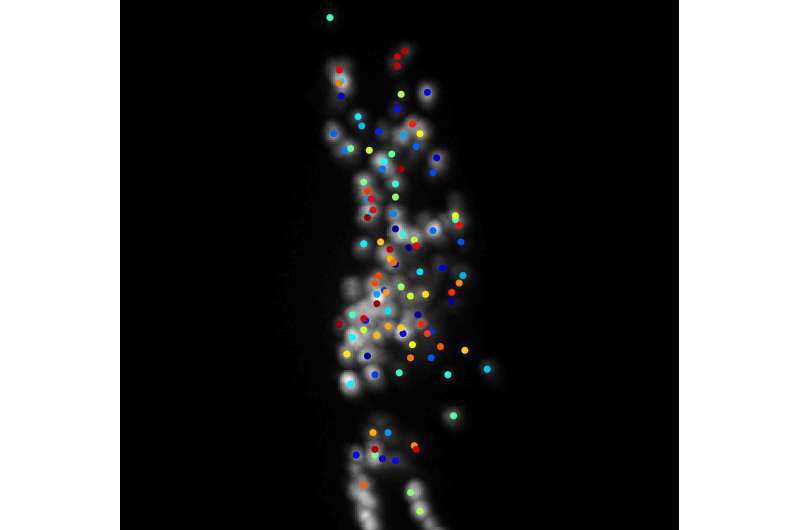New algorithm tracks neurons in bendy brain of freely crawling worm

Scientists at Princeton University have developed a new algorithm to track neurons in the brain of the worm Caenorhabditis elegans while it crawls. The algorithm, presented in PLOS Computational Biology by Jeffrey Nguyen and colleagues, could save hundreds of hours of manual labor in studies of animal behavior.
To investigate the brain's role in behavior, scientists use advanced imaging techniques that record the activity of individual neurons as an animal moves. However, tracking neurons in a moving brain is difficult, especially in the soft-bodied worm C. elegans, whose small size and transparency make it otherwise well suited to such studies.
"When the worm crawls, its brain bends as it moves, which poses challenges for imaging," says study co-author Andrew Leifer. His team has spent many hours manually tracking neurons in recordings of the bendy brains of crawling worms, prompting them to develop a new algorithm to streamline this laborious process.
The new approach, dubbed Neuron Registration Vector Encoding, draws on computer vision and machine learning techniques. It uses 3D fluorescent recordings of the C. elegans brain to assign a unique identity to each neuron it can detect. Based in part on the relative locations of the neurons, the algorithm keeps track of each neuron over time. Tracking is also enhanced by accounting for ways in which certain worm movements are known to deform the brain.
The researchers found that the new algorithm consistently identified more neurons more quickly than did manual tracking approaches or other approaches that are partly automated. They were able to use the new approach to correlate neural activity with specific worm movements, particularly reversal maneuvers.
"This research demonstrates the value of employing automated computer vision- and machine learning-based approaches to help tackle laborious tasks in neuroscience research that previously could only be done by humans," Leifer says.
His team plans to use their new approach to study neural activity during complex C. elegans behaviors, such as foraging, sleeping, and mating. The algorithm could help reveal how different patterns of brain activity generate these behaviors. In the future, the same approach could also be tested in other species, such as zebrafish.
More information: Nguyen JP, Linder AN, Plummer GS, Shaevitz JW, Leifer AM (2017) Automatically tracking neurons in a moving and deforming brain. PLoS Comput Biol 13(5): e1005517. doi.org/10.1371/journal.pcbi.1005517
Journal information: PLoS Computational Biology
Provided by Public Library of Science



















